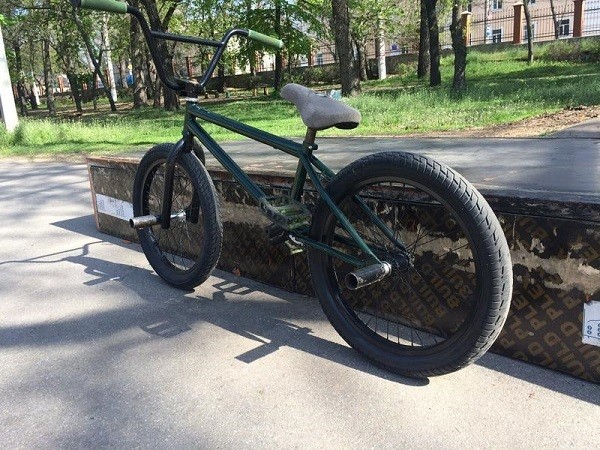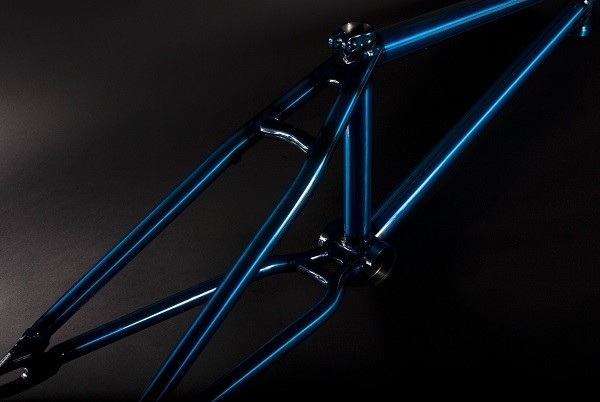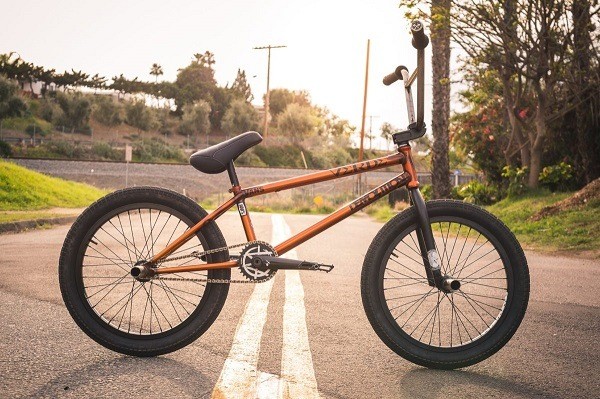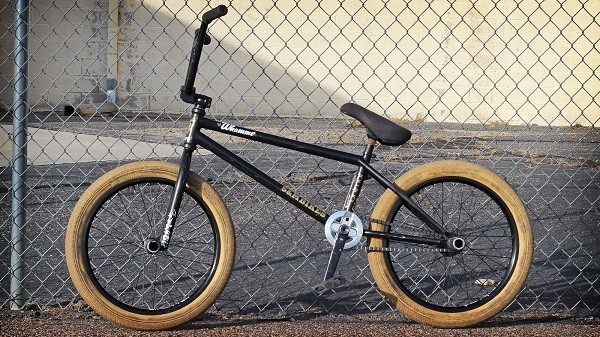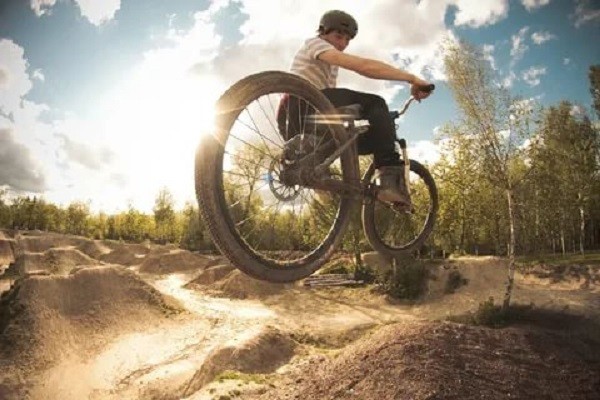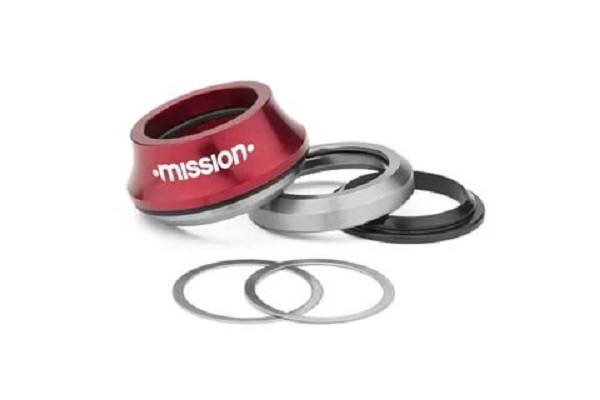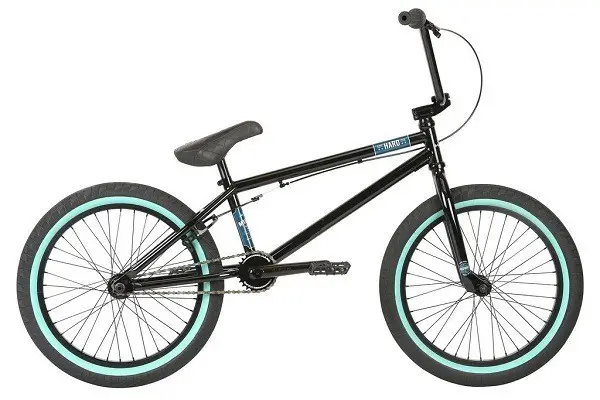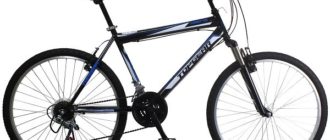The BMX bike was originally created to prepare kids for motocross. But thanks to its ability to withstand loads that other mountain bikes cannot, this bike is now very popular in stunt riding. It can be used to perform turns, jumps, and other spectacular stunts. Let’s talk today about what it is – BMX bike, how it looks like, what it is used for, how to choose a BMX bike and what models are considered the best to date.
What is a BMX bike
A literal translation of the acronym BMX (bicycle motocross) – “bicycle motocross”, “bicycle motocross. BMX bikes are special models in cycling, which have a very stiff frame and fork, allowing bikes to withstand the enormous loads of extreme riding. The wheels are small in diameter, only one speed (and you don’t need more), and the seat is low and close to the frame (this is irrelevant because it is rarely used). It is almost impossible to confuse bimixes with other types of bikes.
History of appearance
In the ’60s and ’70s, when motocross became very popular, the BMX came into existence. Teenagers and children who watched adult athletes compete on the tracks also wanted that kind of drive. They began to create their own tracks, similar to motocross tracks, put on equipment designed for these races, got on their bikes, and staged competitions.
After a while, BMX changed from a child’s entertainment to a sport in its own right, and in 2008 one of its disciplines was included in the Olympic Games.
The design of the device
As mentioned above, BMX bikes have only one speed – there is no gear shifter. The bike is light and stiff – this allows the rider to “rock” the track well. The frame is long and low. And that’s not all that makes the BMX different from a regular bike.
The frame
To make jumps, successful landings and perform unthinkable tricks bike design should be strong. And that’s why the frame of BMX bikes have special requirements:
- as the material from which the frame is made, aluminum, steel alloys, titanium with the addition of chromium-molybdenum to strengthen the base;
- frame geometry – two triangles sharing a base;
- frame tubes are thickened at the points experiencing the highest loads;
- the hub mount is thicker and larger in area than other bikes.
The motocross frame is elongated and very low. True, the length of the frame depends on the type of riding for which the bike will be used.
Handlebar
Thanks to a special mechanism (gyrotator), the handlebar is able to freely rotate 360°. Its strength is ensured by a crossbar (an extra bar in the middle). Grip grips with end caps on the handlebar tips increase the strength of the rider’s grip on the handlebars.
Wheels
Wheels for BMX bikes have a small diameter – from 16 to 24 inches. Most often riders choose a medium for the sport – 20-inch wheels. Depending on the style of riding tires can be put as “toothy” (which well keep the bikes on the ground and absorb the shock received when landing), and smooth road (slicks). Semi-slicks are also popular. The pressure maintained in the wheels is 3-7 bar. Rims should be solid, dual or triple.
Fork
As well as the frame, fork is steel with chrome and molybdenum additives. This, and the massive thickness, gives it the strength it needs.
The pedals needed on the BMX are made of metal, although you can sometimes find models with plastic or carbon pedals. These tubes are 10-11 cm long and provide extra support during tricks and make the rider glide perfectly on railings and different edges.
Speed and braking
Rotating handlebar does not provide any cables that can prevent the cyclist to make another trick, because there is no gear shifter on bimiks, all riders ride at one speed. The same applies to the brake cables – so they don’t get in the way, the front brake cable is retracted inside the fork, and a gyro in the steering column is used for the rear.
Many athletes simply remove the brakes to make the bike even lighter.
Saddle and pedals
The seat is very low, almost at the level of the rear wheel. It is practically not used by riders, since they do not have to sit in the saddle while performing tricks. More often it is used as a support.
But the pedals in BMX bikes are very important because they have to withstand heavy loads. They are usually wider than other types of bikes, made of magnesium alloy or aluminum. Plastic pedals are also available, but they are less durable and reliable. Considering that the cyclist not only pushes the pedals, but also pulls, they have spikes that increase grip on the shoes.
Varieties
Given that motocross cycling is divided into several disciplines, which involves performing a wide variety of tricks, BMX sport bikes come in several types.
Street (Street).
Is the most popular extreme kind, because the rider does not need specially equipped platforms and tracks – you can ride around the city. Tricks can be performed in parks, on stairs and railings, jumping over curbs, on parapets and benches. Artificial street sections can be built for competitions. True, street is not so much a competitive discipline as a lifestyle, which has its own style of behavior, music and fashion.
BMX bikes for street are lightweight bikes without brakes, sometimes without seats. Tires slick or with a faint tread, wide and strong. The wheels are small for easier handling. It is very convenient to perform tricks, gliding on the edges, if the bike will be installed pedals. Rear-mounted freecoaster hubs allow the rider to ride backwards.
“Street” bikes are lightweight, maneuverable and compact units that have good traction. True, it is not worth jumping off trampolines on such bikes, as difficulties may arise with the landing because of the vertical fork.
Racing
This is where BMX began. It is a competitive discipline on the passage of the track. Rasing BMX bikes can speed through low drops, steep turns and other obstacles on the track. The bike features:
- lightweight aluminum frame of high strength;
- a longer base for greater stability;
- tires with a pronounced tread;
- rear brakes;
- quality contact pedals.
These are strong yet lightweight bikes that feel confident on loose or slippery dirt roads.
Dirt (Dirt-jumping).
Competitive discipline, where riders perform stunts of increased complexity on a specially equipped dirt track with hills, ramps, earth mounds. It may be one ski jump or several located one after another.
Here the task is as strong as possible to push off the surface of the springboard to lift high into the air, to make as many difficult tricks and then land smoothly. The better the combination is performed, the more points the athlete gets.
- Dirt BMX bikes are heavier and stockier than other varieties because they have a steel frame, fork, and handlebar.
- The bikes often have not only a front brake but also a rear brake.
- The frames here are the most sturdy.
- A successful landing is ensured by a significant angle of fork deflection.
- Due to the lengthened base the bike is stable in flight.
- Low center of gravity makes the bike especially stable.
- Wide tires with aggressive tread provide maximum traction.
- The pedals are also wide and sturdy.
Dert-jumping – one of the most spectacular and spectacular competitions, but also the most traumatic.
BMX park
Another interesting direction, which emerged, one might say, by accident. When in 1976 the state of California drought dried up the private pools, exposed the bottom with gentle curves. This relief really liked the skateboarders and they began to actively develop new obstacles. Over time, entire skate parks began to appear, which also appealed to BMX-riders. They began to build their own parks which were more suitable for riding bikes than skateboards.
BMX park now – it is a ride on structures with a semi-circular base. During the competition, the rider must perform different heights and amplitudes of figures, and the more he engages the figures in the park, the better. To get points, everything is taken into account: the complexity of the tricks, amplitude, variability in the use of figures.
A park bike is much like a bike for dead-jumping – as strong as it is to withstand difficult tricks. At the same time, it is more agile, twirly, and lighter than similar bimixes for races. There are no brakes on the bike, the tires are thin, with good rolling.
Flatland (Flatland).
Bicycles for this kind of skiing are not designed for riding, rather for “dancing” on one wheel without touching the ground with your feet and acrobatic tricks.
In bicycles for this type of competition base as short as possible, the fork is located almost vertically. Pegs are very strong, two on each wheel. Many spokes and reinforced rims. Responsive brakes are particularly tenacious.
Depending on the style of riding that the rider chooses, his bike should have certain equipment suitable for a particular discipline.
Selection Recommendations
To know which BMX bike to choose, you first need to understand for what purposes it will be used, what tricks you will perform on it and what you expect from your bike.
Material
The price of the unit, its weight and durability depend on the material from which it is made. If it’s regular steel (high-tens), you’ll like the price, but the bike won’t be durable. Parts made of alloy chromium-molybdenum steel (Cr-Mo) is twice as strong, but the price of such a bike is much higher.
If you want to buy an inexpensive, yet high-quality BMX bike, choose “combined” bikes, where some parts are made of Cr-Mo, others – from Hi-Ten. Especially check that the frame is alloy steel.
Aluminum frames are only good for BMX Racing, and also for kids and teens. Serious jumps and bumps they will not withstand.
Titanium frames are unreasonably expensive, in this case, it is better to prefer alloy bikes.
Handlebar
Pay attention to the steering column is powerful, in diameter at least 1.1/8 inches. Ideally, it will be an integrated tumbler with closed type industrial bearings that will not destroy the tube.
Carriage cup.
Choose a carriage cup that has a pressed-in bushing and bearings (Mid or the lighter Spanish “Spanish”). There is also Euro – threaded bottom bracket with external bearings, but they are heavy, not too reliable and popular. Do not consider other options at all.
Hubs
Hubs carry all the load, so they also need to pay close attention when choosing a BMX bike.
- The best option will be a hub with a driver – thanks to the ratchet mechanism of the cassette it has a long life, lightens the design, which allows you to effectively perform tricks on the bike.
- Another option, freecoster – a rarely seen type of hub for the standard model of trick bike, which in addition costs exorbitant money.
- And the third, freewheel – a budget version of the hub, its disadvantage is a large and heavy star.
Wheels
For better stability and durability, buy wheels with double rims, 1.8-2.25 inches thick. A large number of spokes increases the ability to withstand heavy loads. Suitable rubber – slicks or semi-slicks, for poor pavement will do tires with a pronounced tread.
Pedals
The best pedals are magnesium pedals – they are sturdy and weigh less than aluminum pedals. The latter are also considered reliable and at the same time, the price is more affordable. But plastic pedals are the least durable, but they are easy to replace in case of breakage and are the cheapest.
Size
Due to the fact that BMX bikes are mainly ridden while standing on the pedals, the size of the frame does not matter much. Although, of course, the length of the upper tube does matter and it is worth selecting a suitable option by trying it on.
The best BMX bikes
If you have decided on the style of riding, it remains to choose the best variant of the bike for your purposes. We offer you the rating of BMX bikes manufacturers.
Haro Bikes – the popularity of bicycles of this company gave its founder – a professional cyclist Bob Haro. He developed his bikes, and then spoke on them, performing mind-blowing stunts, and thus promoted his brand to the leaders of BMX bike manufacturers. In addition to bimixes, the company produces mountain bikes and beach bikes.
Sunday – the company’s products best meet the needs of consumers, because the developers of the brand are actively riding bikes extreme. The company gives a lifetime warranty on its bikes, and all thanks to the durable chromium-molybdenum frame and other components, which undergo special heat treatment.
Subrosa is a manufacturer of high quality and affordable bmx bikes and accessories. Thanks to a wide range of products, both professional cyclist and beginner BMX amateur will find a suitable option for themselves.
Stolen Bike, made from lightweight, durable chrome, has removable brakes-just right for those BMX riders who prefer to ride without brakes.
Redline is one of the first companies to launch bimixes at a time when BMX was just a discipline copied from motocross racing. Since then, and to this day athletes on the bikes of the company win competitions. Redline models are still considered the best for racing.
Conclusion
BMX bikes are unique units, unlike other bikes, including bikes of other sports disciplines. They have significant differences even among themselves in sub-disciplines. Manufacturers do not stand still and are constantly improving their models, which allows the rider to improve their skills in performing tricks. In addition to constant training, the cyclist is required to follow the safety rules, use protection and work on more complex tricks and techniques.

